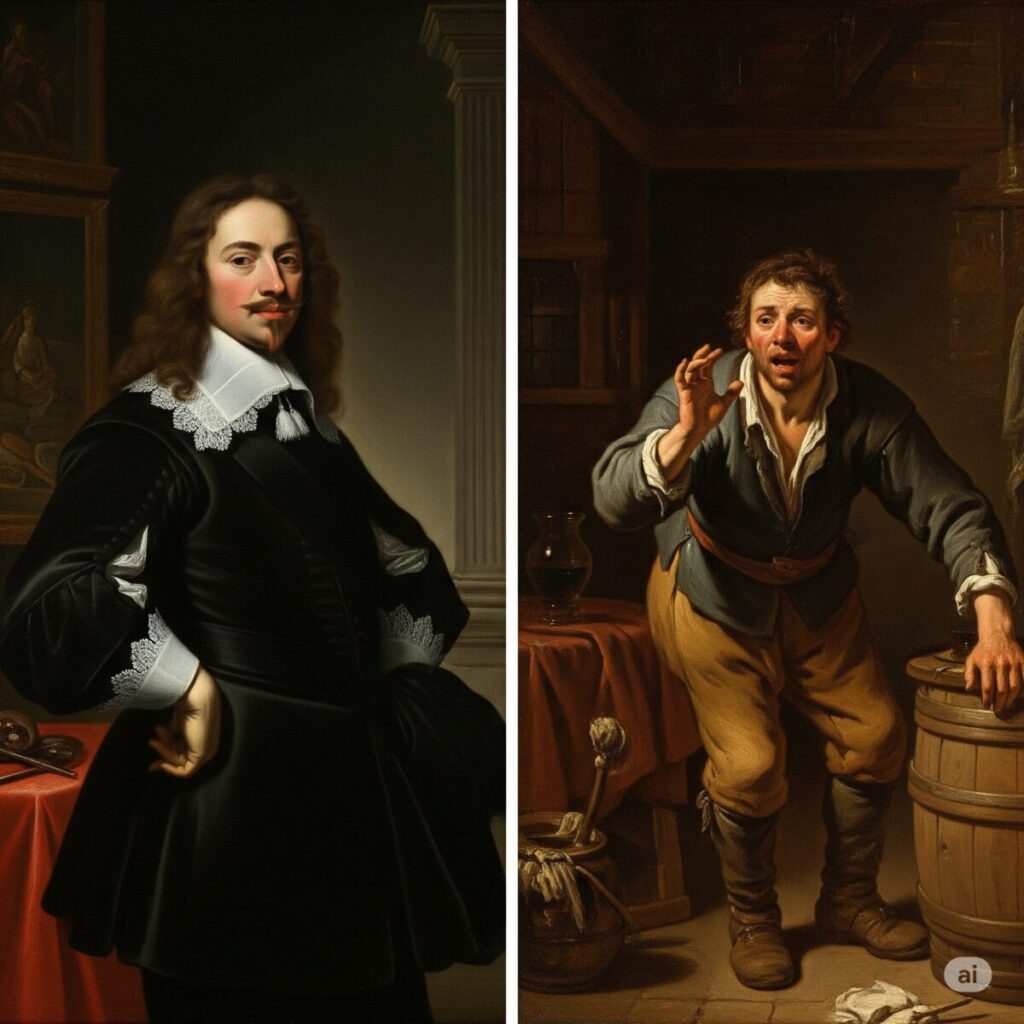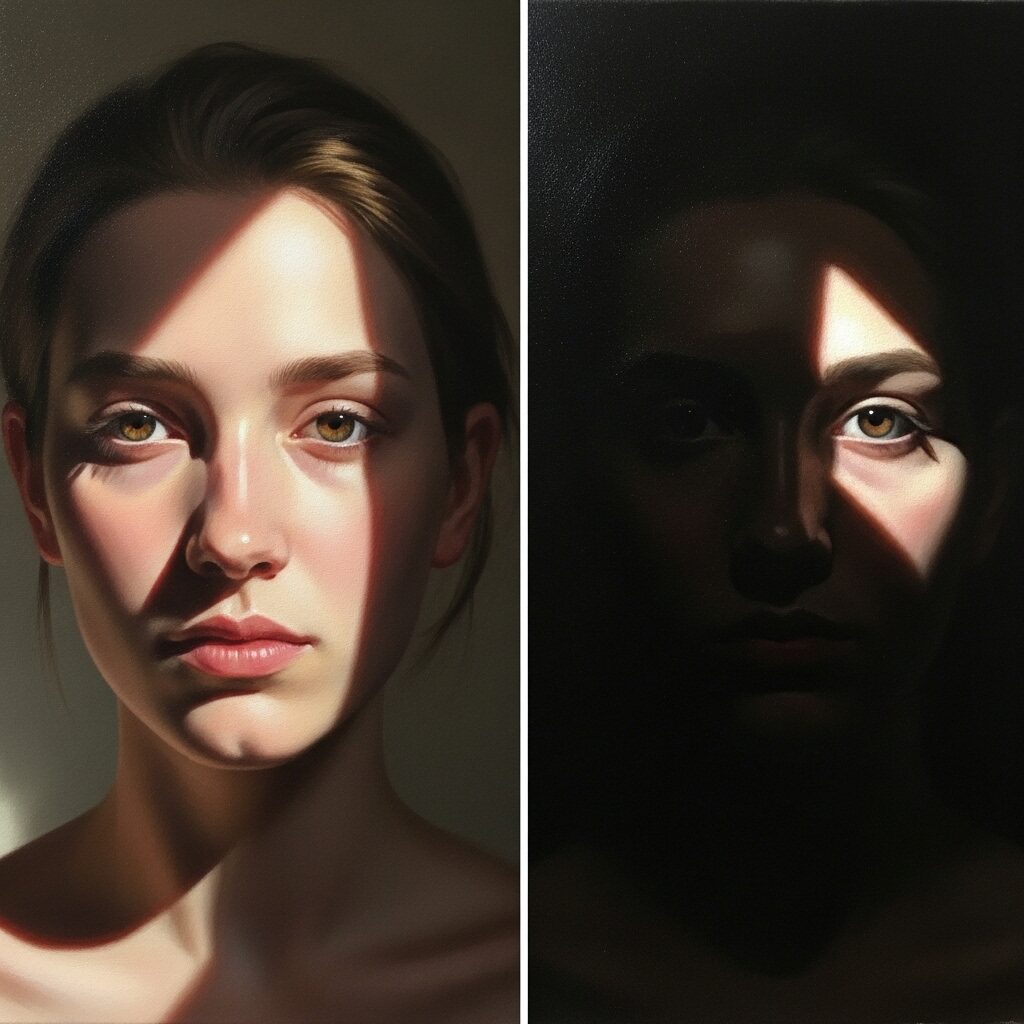The Baroque Movement in Art transformed the creative landscape of Europe from the late 16th century through the early 18th century, bringing unprecedented drama, emotion, and visual spectacle to painting, sculpture, and architecture. This revolutionary art style emerged as a powerful tool of the Catholic Counter-Reformation and royal propaganda, creating works that still captivate viewers today with their intense realism, dramatic lighting, and overwhelming grandeur. Understanding the Baroque movement opens a window into one of history’s most influential periods of artistic innovation.
Key Points Summary
- Originated in late 16th-century Italy as part of the Catholic Counter-Reformation
- Characterized by dramatic lighting, emotional intensity, and dynamic movement
- Featured masters like Caravaggio, Bernini, Rubens, and Rembrandt
- Spread across Europe with regional variations
- Influenced architecture, music, and decorative arts
- Created lasting impact on modern art, cinema, and design
Historical Origins and Cultural Context
The Spread of Baroque Art Across Europe
From Italian Counter-Reformation to European Cultural Revolution (1580-1720)
The Baroque movement spread organically across Europe over 140 years, adapting to local cultures, religious traditions, and political systems while maintaining its core characteristics of drama, emotion, and grandeur.
The Baroque style didn’t appear out of nowhere—it was born from intense political and religious turmoil. After the Protestant Reformation challenged Catholic authority in the 16th century, the Catholic Church launched the Counter-Reformation to win back believers and reassert its power.
Art became the Church’s secret weapon. Religious leaders realized that stunning visual experiences could touch people’s hearts more effectively than lengthy sermons. They commissioned artists to create works that would make viewers gasp with awe and feel closer to God.
The Meaning Behind “Baroque”
The word “Baroque” comes from the Portuguese term “barroco,” which jewelers used to describe oddly-shaped pearls. This perfectly captures the movement’s spirit—while Renaissance art was like a perfect, smooth pearl, Baroque art was irregular, dramatic, and thrilling in its unpredictability.
Core Characteristics of Baroque Art
1. Dramatic Light and Shadow (Chiaroscuro)
Baroque artists mastered the technique of chiaroscuro—using sharp contrasts between light and dark to create drama. Imagine a spotlight hitting an actor on a dark stage—that’s the effect these painters achieved on canvas.
Caravaggio took this even further with tenebrism, using such intense shadows that figures seemed to emerge from complete darkness. His painting The Calling of Saint Matthew demonstrates this technique perfectly, with a beam of light revealing the crucial moment of divine calling.
2. Movement and Action
Unlike the calm, posed figures of Renaissance art, Baroque subjects are caught in motion. Drapery swirls, bodies twist, and diagonal lines create a sense of energy that makes paintings feel alive.
“Baroque artists didn’t want viewers to just look at their art—they wanted them to feel swept up in the action, as if they were witnessing these dramatic moments firsthand.”
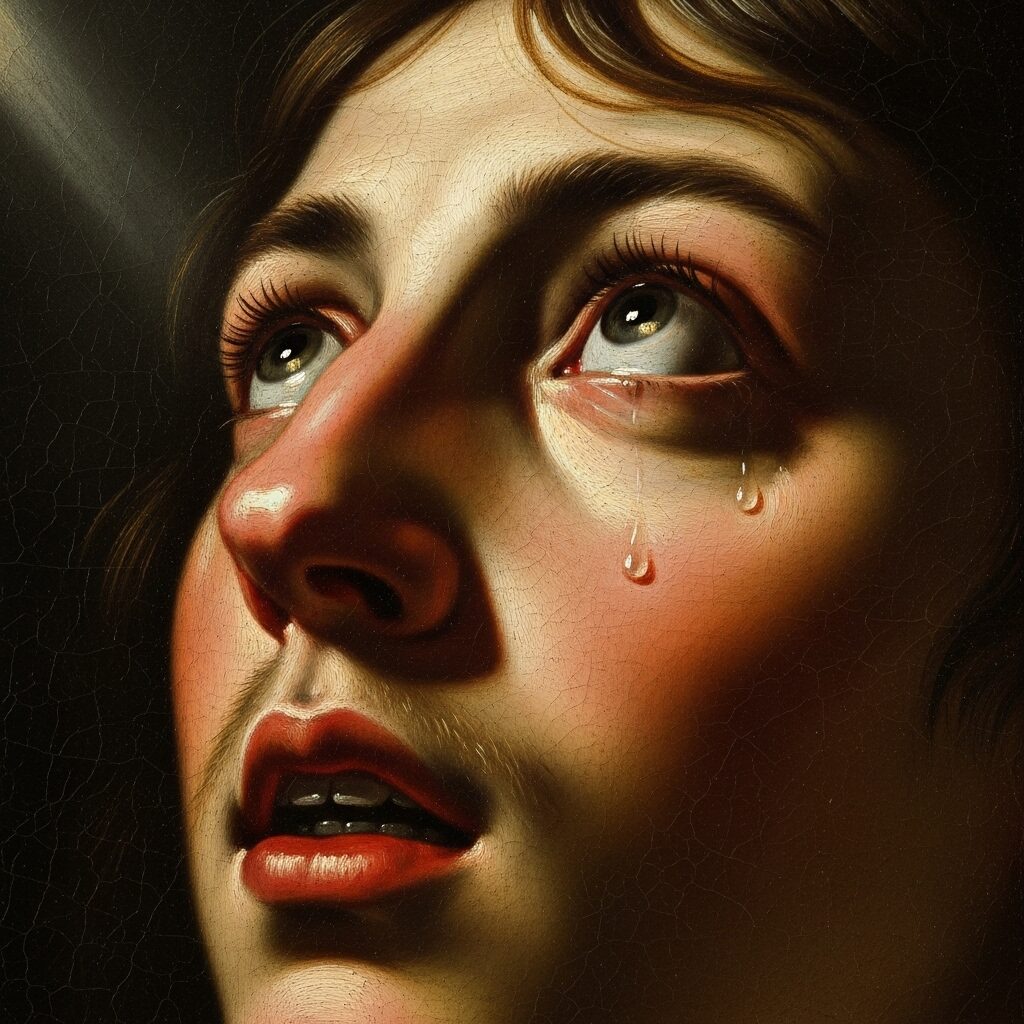
3. Emotional Intensity
Baroque art hits you in the feelings. Subjects display raw human emotions—ecstasy, agony, divine revelation, or terror. Artists painted people at their most vulnerable and powerful moments, making religious and mythological stories feel incredibly real and personal.
4. Optical Illusions and Trompe-l’œil
Baroque artists loved to trick the eye. They painted ceilings that seemed to open up to heaven, complete with floating angels and swirling clouds. These trompe-l’œil (French for “fool the eye”) techniques made viewers feel like they were experiencing miracles.
Revolutionary Techniques and Innovations
| Technique | Description | Famous Example |
|---|---|---|
| Quadrature | Ceiling painting combining architectural illusion with narrative scenes | Sant’Ignazio Church ceiling, Rome |
| Quadro Riportato | Fresco technique simulating framed canvases on ceilings | Sistine Chapel ceiling |
| Integration of Arts | Blending painting, sculpture, and architecture into unified experiences | Bernini’s Cornaro Chapel |
Master Artists of the Baroque Era
Caravaggio (1571-1610): The Pioneer of Drama

Michelangelo Merisi da Caravaggio revolutionized painting with his radical realism and dramatic lighting. He painted religious figures as ordinary people, complete with dirty fingernails and weathered faces. His Judith Beheading Holofernes shows the brutal reality of the biblical story with shocking directness.
Gian Lorenzo Bernini (1598-1680): The Sculptor of Emotion
Bernini turned marble into fluid emotion. His sculpture The Ecstasy of Saint Teresa captures a moment of divine rapture so convincingly that viewers can almost feel the saint’s spiritual experience. He also designed the magnificent colonnade at St. Peter’s Square in Rome.
Peter Paul Rubens (1577-1640): The Master of Color and Movement
This Flemish artist filled his canvases with swirling energy and rich colors. His The Elevation of the Cross demonstrates his ability to show multiple figures in dynamic action while maintaining perfect compositional balance.
Rembrandt van Rijn (1606-1669): The Psychologist of Paint
The Dutch master used light not just for drama but to reveal the depths of human psychology. His self-portraits show an artist constantly examining his own soul, while The Night Watch proves that group portraits could be just as exciting as religious scenes.
Baroque Across Europe: Regional Variations
The Baroque Movement in Art spread differently across European countries:
- Italy: The birthplace, focusing on religious drama and papal grandeur
- Spain: Emphasized mystical spirituality and austere elegance
- Flanders: Created lush, energetic paintings full of life and color
- France: Developed a more classical, refined version for royal courts
- Netherlands: Preferred intimate scenes and psychological depth
- Germany and Austria: Embraced theatrical church decoration
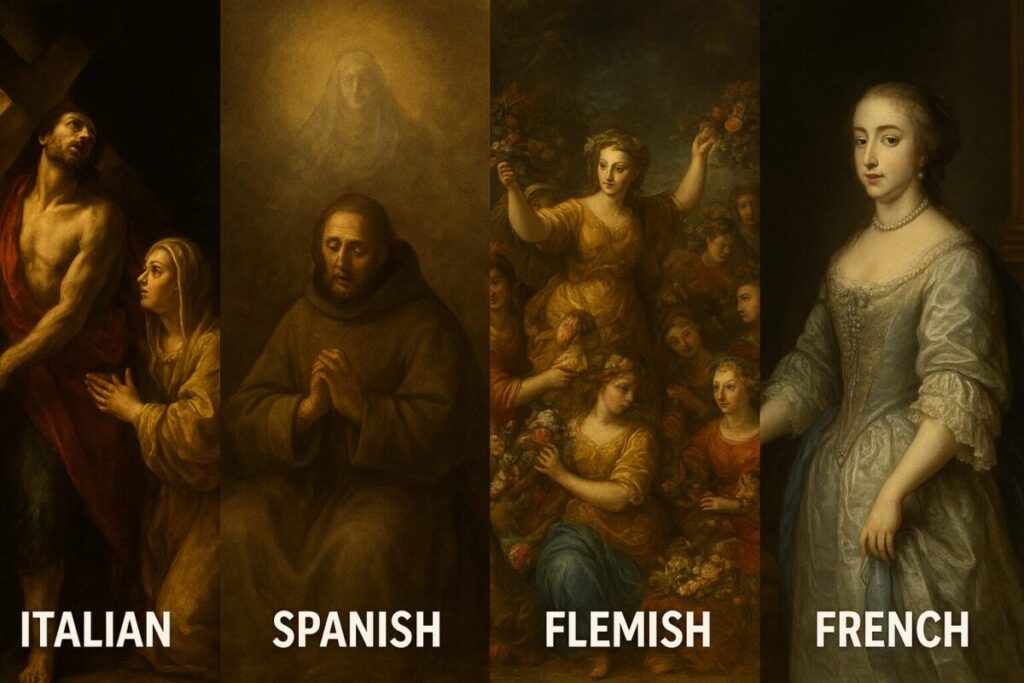
Architecture and Decorative Arts
Baroque architects created buildings that functioned like stage sets. Churches featured soaring domes, curved facades, and interiors dripping with gold and marble. The goal was to overwhelm visitors with beauty and make them feel small before God’s magnificence.
Palaces like Versailles in France showed how rulers used Baroque style to display their power. Every room was designed to impress visitors with the monarch’s wealth and authority.
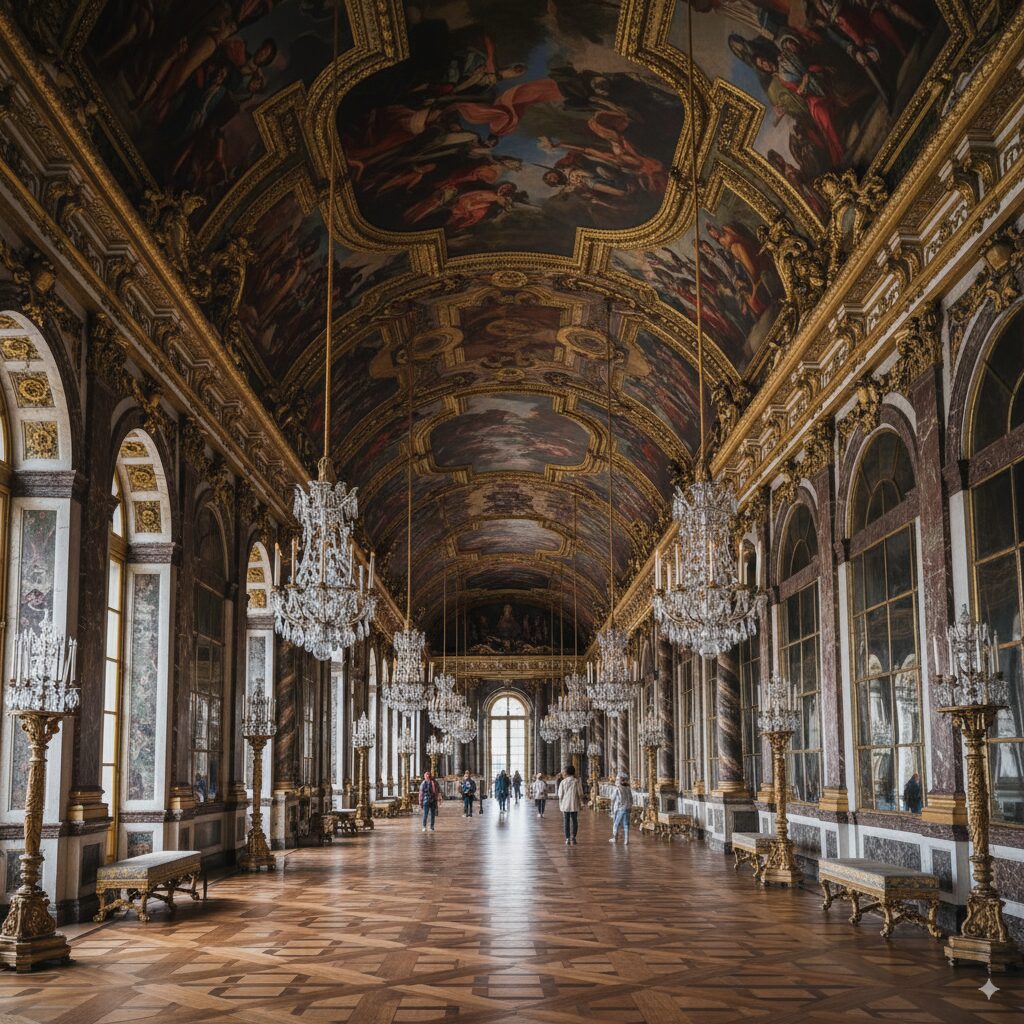
Musical and Theatrical Connections
Baroque visual art shared its dramatic spirit with music and theater. Composers like Johann Sebastian Bach and George Frideric Handel created music with the same emotional intensity and ornate decoration as Baroque paintings. Opera houses became total art experiences, combining visual spectacle with musical drama.
Legacy and Modern Influence
The Baroque Movement in Art didn’t end in the 18th century—its influence continues today. Modern filmmakers use Baroque-style lighting and composition to create dramatic scenes. Fashion designers reference Baroque ornamentation, and architects still draw inspiration from its grand spaces.
Contemporary artists like Jeff Koons and Damien Hirst create works that share Baroque’s love of spectacle and emotional impact, proving that the movement’s core principles remain powerful.
How to Recognize Baroque Art
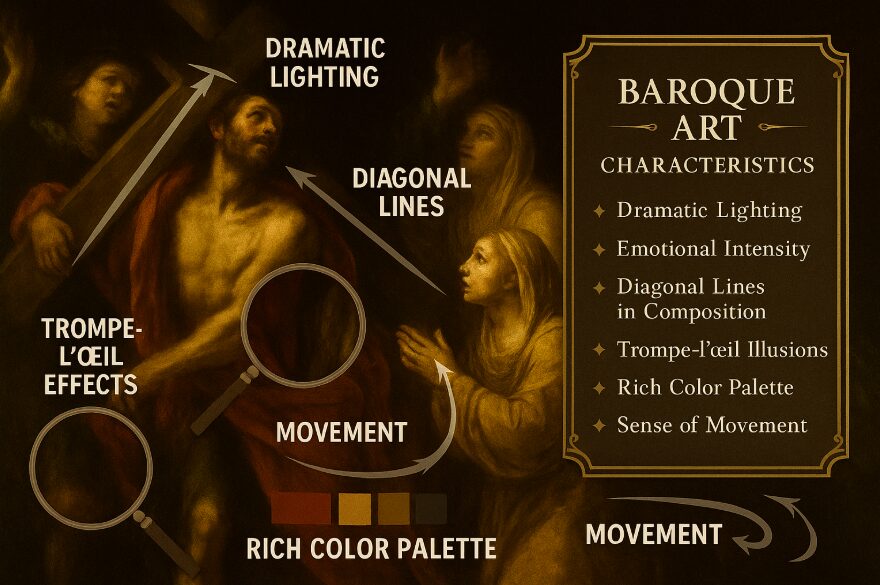
When visiting museums or viewing art online, look for these telltale signs:
- Dramatic lighting with sharp contrasts between light and dark areas
- Dynamic poses showing figures in action or intense emotion
- Diagonal compositions that create energy and movement
- Rich, deep colors often including gold accents
- Realistic details that make subjects feel alive and present
- Large scale designed to impress and overwhelm
The Baroque Movement in Art represents one of history’s most successful attempts to use creativity for persuasion and emotional connection. By understanding its techniques, masters, and cultural context, we gain insight into how art can shape beliefs, display power, and touch human hearts across centuries. Whether you’re exploring a Roman church or viewing paintings in a modern gallery, recognizing Baroque elements will deepen your appreciation for art’s ability to move and transform us.
Frequently Asked Questions
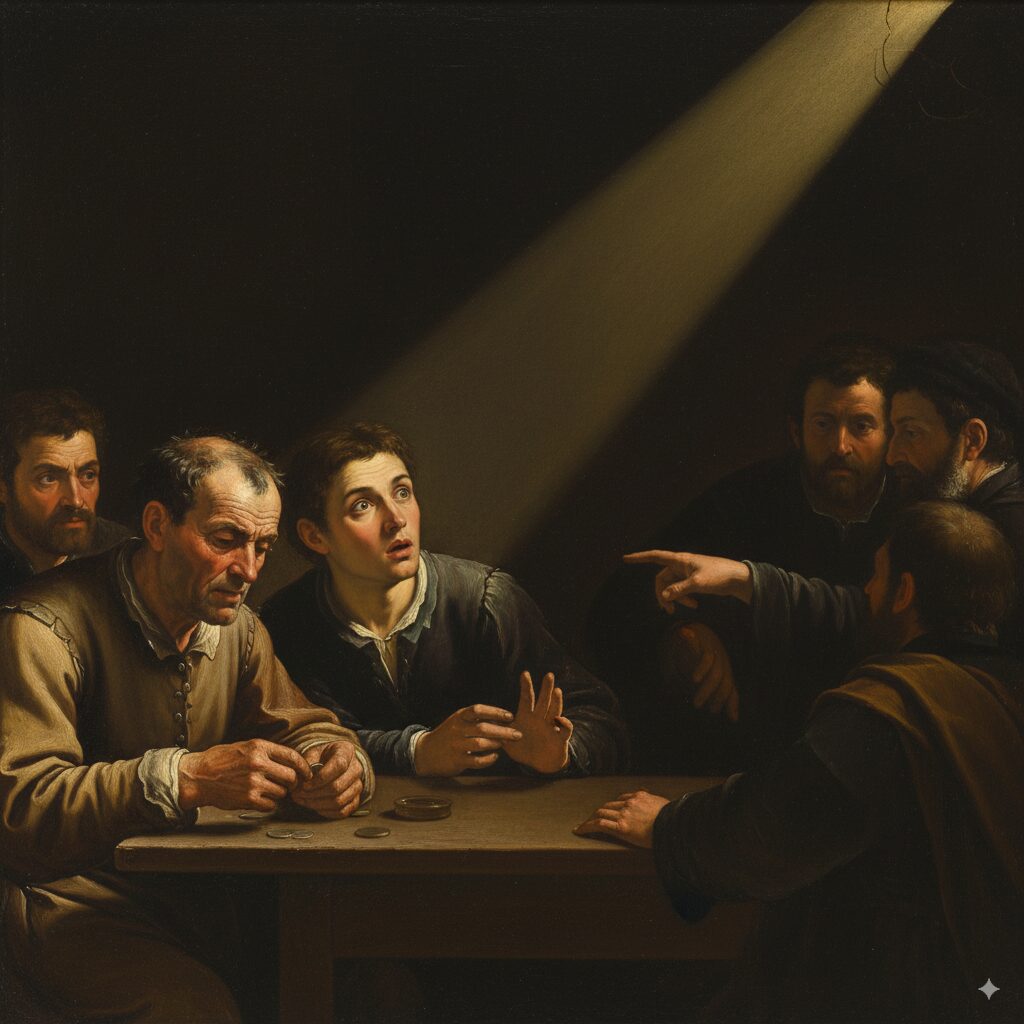
What is the main difference between Renaissance and Baroque art? Renaissance art emphasized harmony, balance, and idealized beauty, while Baroque art focused on drama, emotion, and dynamic movement. Baroque artists wanted to create immediate emotional impact rather than intellectual contemplation.
Why did the Catholic Church promote Baroque art? The Church used Baroque art as a tool during the Counter-Reformation to make religious experiences more emotionally compelling and to demonstrate the Church’s power and glory to both believers and skeptics.
Who were the most important Baroque artists? Key figures include Caravaggio (dramatic lighting), Bernini (dynamic sculpture), Rubens (energetic painting), Rembrandt (psychological depth), and Artemisia Gentileschi (powerful female perspective).
What countries had the strongest Baroque movements? Italy, Spain, Flanders (Belgium), France, and the Netherlands all developed significant Baroque traditions, each with distinct regional characteristics reflecting local culture and politics.
How did Baroque art influence later movements? Baroque’s emphasis on emotion and drama influenced Romanticism, while its theatrical techniques appear in modern cinema, photography, and contemporary art installations.
What techniques make Baroque art so dramatic? Chiaroscuro (light-dark contrast), tenebrism (extreme shadows), trompe-l’œil illusions, diagonal compositions, and the integration of multiple art forms create Baroque’s characteristic intensity.
Additional Resources
- The Art Story: Baroque Art and Architecture
- Victoria and Albert Museum: Baroque Collections
- Britannica: Baroque Art and Architecture
- Smarthistory: A Beginner’s Guide to Baroque Art
- WikiArt: Baroque Artists Directory
Sources: The Art Story, Victoria and Albert Museum, Britannica Encyclopedia, Smarthistory, and various academic art history resources.

